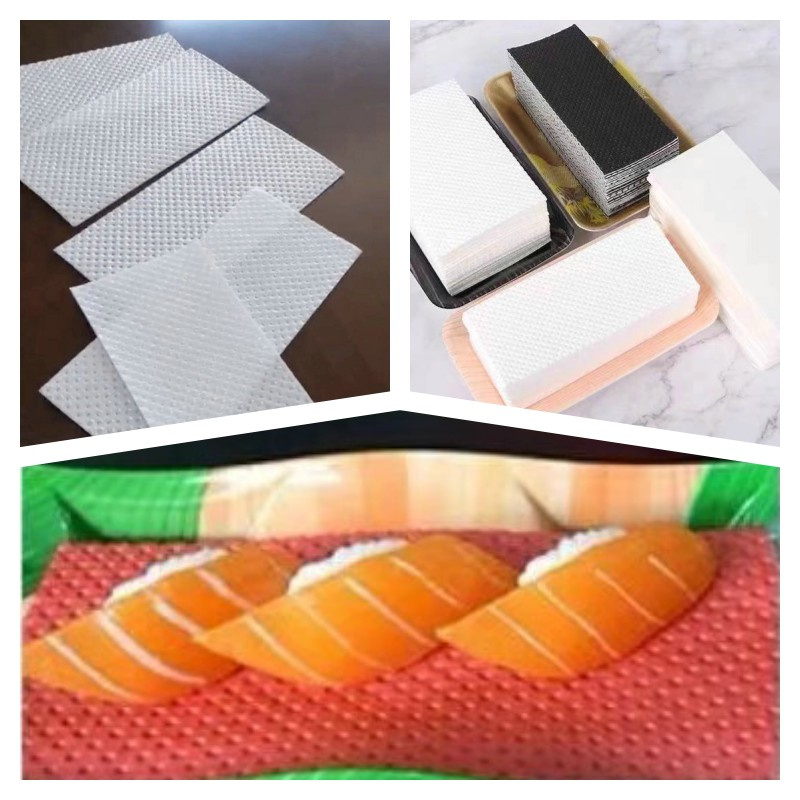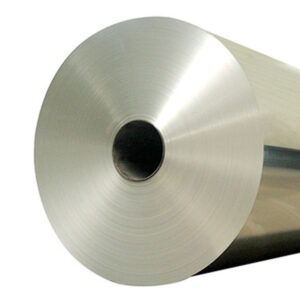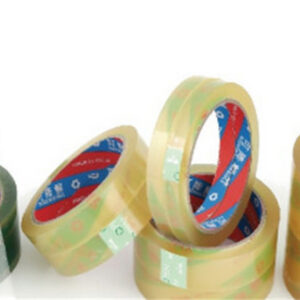Why use the Soaker pad for Fish / Seafood
With the development of society and the improvement of living standards, food safety, and freshness have become increasingly important concerns for modern individuals. In the process of food transportation, storage, and sales, maintaining food freshness and hygiene has always been a challenge in the industry. However, the emergence of disposable food soaker pads has provided a novel solution to this problem. This article delves into the composition of the Soaker pad for Fish / Seafood, the way of the soaker pads work, their advantages, and the environmental considerations surrounding their use.
Composition
Disposable Soaker pad Fish / Seafood are primarily composed of polyethylene (PE) and wood-pulp paper. Polyethylene is a common synthetic resin widely used in packaging materials due to its excellent physical properties. For the soaker pads, the PE film will lock the liquid inside. And Wood-pulp paper, on the other hand, is a fiber material with water-absorbing properties, allowing it to quickly absorb moisture from the surface of food.
1. Polyethylene (PE):
Polyethylene is a thermoplastic material with good toughness and chemical resistance. Its advantages include lightweight, flexibility, high transparency, and its ability to avoid the release of harmful substances into food. Additionally, it has a certain water resistance that effectively prevents food from losing freshness due to water absorption.
2. Wood-pulp paper:
Wood-pulp paper is a special type of paper that has undergone a specific treatment to prevent the generation of dust and fibers on its surface, ensuring safe contact with food. The key feature of wood-pulp paper is its outstanding water absorption, which rapidly absorbs moisture from the surface of food, preventing water from lingering in the packaging and thus maintaining the freshness of the food.
How to work
The working principles of disposable food freshness absorbent pads are quite simple, relying on the specific characteristics and structure of the materials to achieve food preservation.
Food contacts pad, wood-pulp paper’s pores quickly absorb moisture from its surface. This prevents water from stagnating in the packaging, slowing down the food’s decay rate, and extending its shelf life. Meanwhile, polyethylene (PE) acts as a packaging material with excellent sealing properties, isolating the food from the external environment and preventing the invasion of bacteria and oxygen, thereby ensuring the food’s hygiene and freshness.
Advantages of the Soaker Pad Fish / Seafood
1. Extended shelf life:
Disposable Soaker pad Fish / Seafood effectively absorb moisture from the food’s surface, slowing down its decay rate and thereby extending its shelf life, preserving its freshness and flavor.
2. Enhanced food quality:
Pads prevent bacteria and oxygen invasion, maintain food hygiene and quality, and reduce spoilage risk.
3. Convenience and hygiene:
Using disposable food freshness absorbent pads reduces direct contact with food, minimizing the possibility of cross-contamination and ensuring the food’s hygiene and safety.
4. Diverse applications:
Customizable for various food items, the pads offer wide-ranging application possibilities.
5. Environmental considerations:
While disposable, these absorbent pads predominantly utilize materials such as polyethylene (PE) and dust-free paper, which can relatively easily degrade in ecological environments, resulting in minimal environmental impact.
Conclusion of Soaker Pad Fish / Seafood
Disposable Soaker pad Fish / Seafood presents an innovative packaging material that offers significant advantages in food preservation and quality maintenance. Their composition, combining polyethylene (PE) and dust-free paper, allows for the rapid absorption of moisture from the food’s surface, preserving its freshness and hygiene. Though they are disposable, the materials used in their construction contribute to a relatively minor environmental impact.
However, we must remain mindful of their rational use and proper disposal to reduce any adverse environmental effects. With technological advancements, it is reasonable to expect further improvement and development of soaker pads, contributing to even greater convenience and innovation in food preservation. In an era that seeks constant innovation and convenience, proactive exploration and promotion of environmentally friendly and sustainable packaging materials and technologies are essential.
To address environmental concerns associated with disposable Soaker pads, we have biodegradable (compostable) soaker pads as well.
1. Encourage responsible usage:
Select absorbent pad size and quantity based on food characteristics, minimizing waste and excessive usage in packaging.
2. Promote recycling:
Encourage consumers to recycle used disposable food freshness absorbent pads to reduce waste production. Furthermore, through recycling and reprocessing, we can reduce resource consumption.
3. Explore eco-friendly alternatives:
Research and promote eco-friendly, biodegradable packaging like biocomposites to replace plastics, significantly reducing environmental pollution.
4. Strengthen education and awareness:
Enhance consumer environmental awareness, promote sustainable development, and advocate green lifestyles for better environmental protection.
5. Policy guidance and support:
Governments can implement relevant policies to encourage and support businesses in the production and promotion of eco-friendly packaging materials, fostering innovation and stimulating market demand.
In conclusion, disposable food freshness absorbent pads are an innovative packaging material that offers convenience and benefits in food preservation. However, we must also recognize the environmental challenges they pose and actively adopt measures to mitigate their impact. Through technological innovation and green development, we can improve food preservation for a healthier future.

















